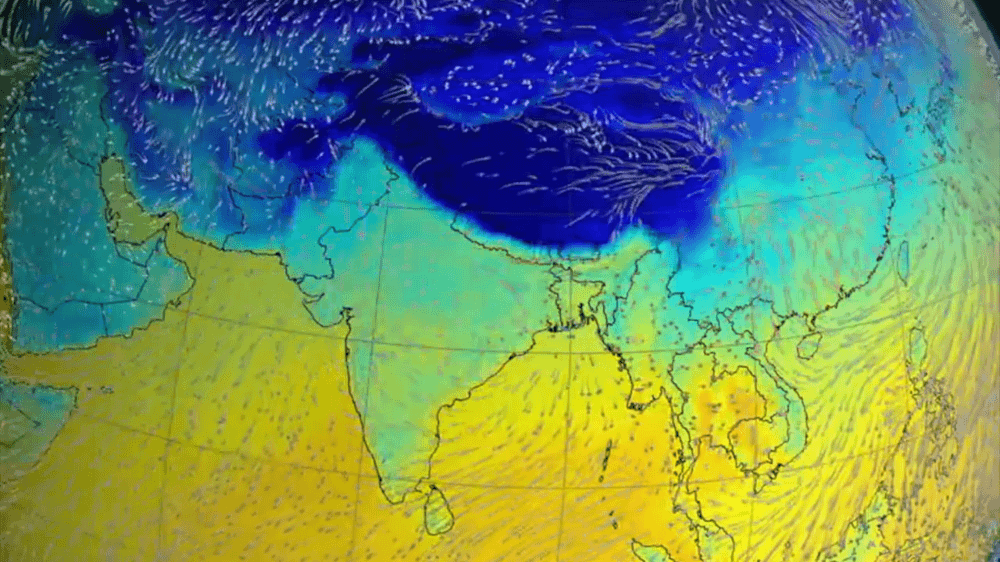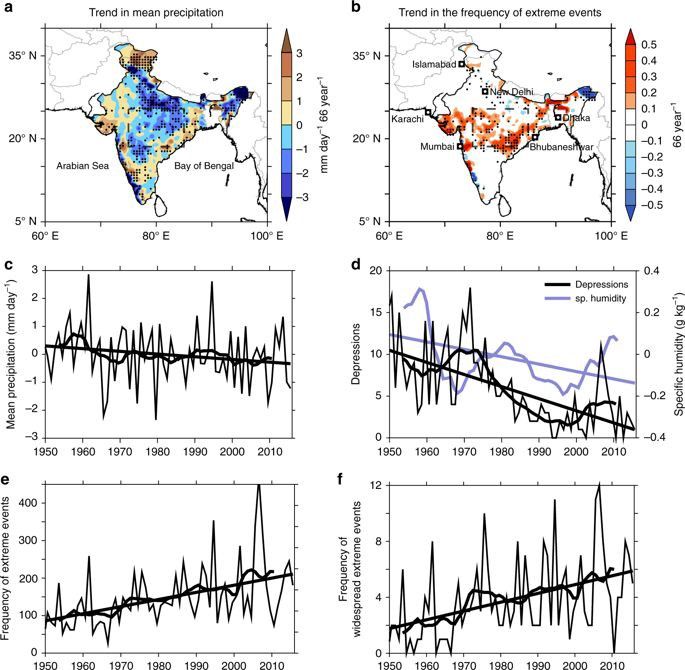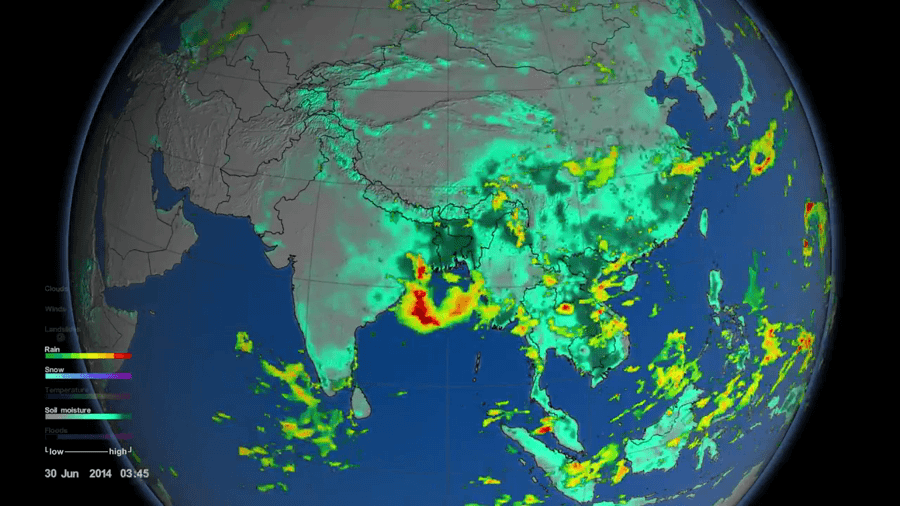Climate Change Is Breaking The Monsoon
Extreme temperatures = extreme rains = extremely bad

It’s raining right now. It’s been raining for days. In the long run, it’s been raining on my little civilization for thousands of years.
This is our monsoon.
In a lot of ways, the monsoon is a natural disaster. It’s a flood. The only reason we’re not building an ark is because it’s predictable, and we’ve built our agriculture and economy around it for generations.
That’s all changing because the climate is changing. The rain is increasingly flooding homes. Droughts are increasingly wrecking crops. The engine that has powered our civilization for literally thousands of years is overheating.
Here’s how.
How The Monsoon Works

The monsoon runs on one simple thing. Temperature. Temperature creates high and low pressure fronts which move clouds around. It’s obviously a complicated interaction, but the key input is temperature.
If you stop to think about it, it’s amazing. The whole thing is a solar powered, wind-driven irrigation system that serves all of Asia. It’s the most efficient and elegant agricultural system in the world, and we’re messing it up. But I’m getting ahead of myself.
Let’s look at the monsoon in action, two monsoons actually.
Summer Monsoon

In the summer, the Indian subcontinent heats up a lot. The ocean, however, only heats up a little. It’s like how a swimming pool stays cool on a hot day.
This heat expands the air above the land, creating an area of low pressure.
In contrast, the air above the ocean is cool, moist and dense. It’s under higher pressure, like the air inside a blown-up balloon. If you let the balloon go, the air rushes out. And that’s what happens.
This is the monsoon wind. It’s moist, high pressure air from the ocean rushing over the land. It even makes a fart noise if you stand near the ocean¹.
One unique feature here is the Himalayas. The monsoon wind hits this cold, high area and it’s like ‘NO’. You can see it bounce off, creating even more rain.
Winter Monsoon

This is the winter monsoon, which is raining on me right now. For India and much of the world this is a weaker monsoon because it blows from land to sea, but it hammers us because Sri Lanka is an island.
You can see the temperature differences for yourself. The cool air in Asia and India creates a high pressure front which pushes the air out across the ocean. On the way it picks up some water from the Bay of Bengal and dumps it on us.
This monsoon is drenching us right now. We got 150mm of rain on Monday and about as much yesterday.
What Climate Change Does
Rising temperatures has complex effects, but there is some consensus² that it makes the monsoon more extreme.
We get less rain overall, but more all at once. Which is the problem. This data covers India, but it’s much the same for me. In the second row you can see that rainfall is actually less, but in the third row you can see that extreme events are more.

What we’re getting is a much less useful monsoon. Rather than irrigating crops over months, it is drowning people in days.
In 2017 parts of the country got 500 mm of rain within 24 hours. About 600,000 people were displaced and nearly 300 people were dead or missing. It knocked out roads, destroyed homes and put our only beer factory out of commission for months.
How It Works (Or Doesn’t)
Temperature is the key. It’s so fundamental that if you mess with this one thing it has countless effects, all bad.
A warmer ocean evaporates more water — so heavier clouds. However, a warmer ocean creates less pressure, so a weaker monsoon. At the same time, warmer land also creates less pressure, which revives the monsoon a bit. Either way, the delicate balance is lost.
What we’re getting instead is paroxysms of drought and flood.
Roxy Mathew Koll, a climate scientist at the Indian Institute of Tropical Meteorology, said that in parts of India, “what we are seeing is that there are more frequent heavy rainfall events as well as dry spells, and fewer moderate rainfall events.”
Most studies project that extreme rainfall will continue to rise with temperatures. “In terms of total rainfall, the models don’t all agree,” said Roxy. “But we have high confidence that heavy rainfall events are going to increase further.” (Yale Environment 360)
We’ve taken a regular system that delivered rain over a season and turned it into a regular disaster. At the same time, we have ‘developed’ by urbanizing marsh and mangrove areas, so we have precious little tolerance for floods. Western and increasingly Chinese emissions and our own folly has turned the monsoon from friend to foe.
Again, it is is raining right now. It is raining inside my office. It has been raining for almost three days now, with little relief. We can’t handle this.
The Future Of The Monsoon

The future of the monsoon is in many ways the future of us. As you can see above, this majestic system irrigates the entire region. It feeds billions.
If you open any annual report in Sri Lanka (or India) it references the monsoons, because they still determine consumer spending. A good rain means a good year. A bad rain means misery. It’s been that way for millenia and hasn’t really changed.
What has changed is us. Anthropogenic climate change has indubitably warmed the planet. Every year is the hottest ever. It’s still getting worse and not better, and we are still fighting powerful people that don’t care.
The monsoon is just one example of why we have to completely stop fossil fuels and completely re-evaluate the meaning and value of growth. If we keep growing the way we’re going we will upset the very basis of our civilization. We will take ourselves back to a time before memory, a time when the monsoon was not our friend.
I can hear it now, a steady, insistent drip from the ceiling.
This is our monsoon. It’s not supposed to be inside.
⁰ Monsoons: Wet, Dry, Repeat… NASA Goddard, YouTube
¹ No
² As the Monsoon and Climate Shift, India Faces Worsening Floods. Yale Environment 360.
³ A threefold rise in widespread extreme rain events over central India. M. K. Roxy, Subimal Ghosh, Amey Pathak, R. Athulya, Milind Mujumdar, Raghu Murtugudde, Pascal Terray & M. Rajeevan. Nature.